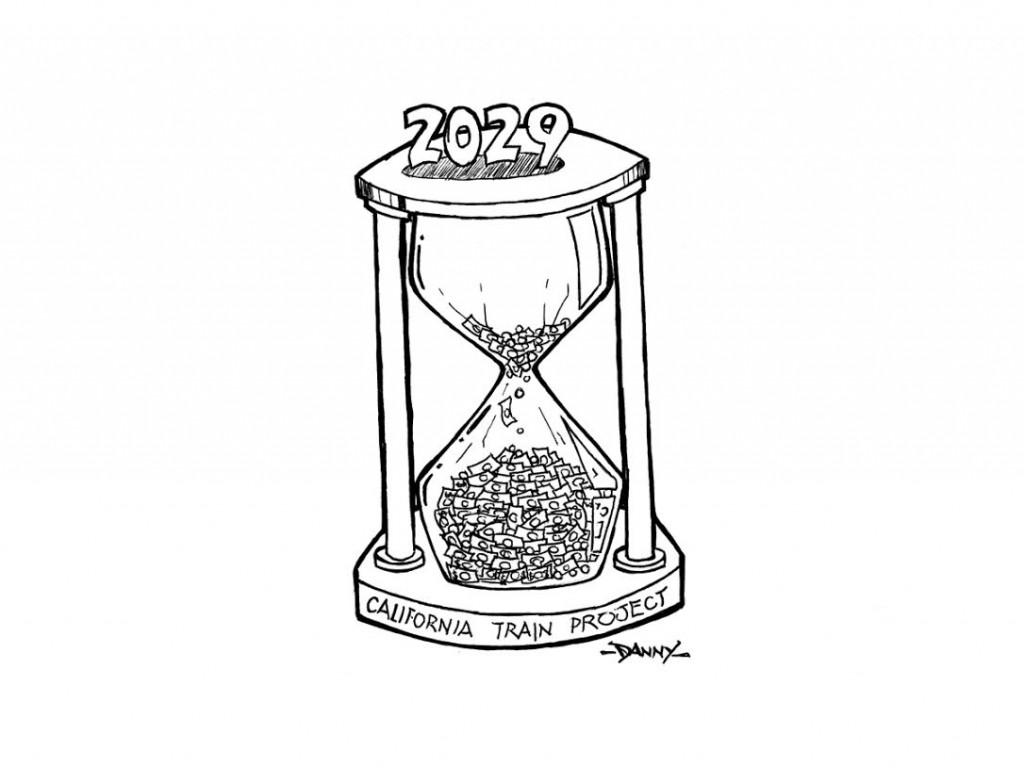
After numerous delays and continuing opposition, work on California’s first high-speed rail finally began on Jan. 6. Actually, construction began back in June, according to the Orange County Register, but the fanfare was delayed until after Gov. Brown was re-elected. Tuesday’s groundbreaking ceremony was focused on the Fresno station, where the first portion of the track is being laid to cover the 29 miles between Fresno and Madera.
Conceptually, I am totally behind the idea of a bullet train in California. It would be great to be able to jump on a train in the morning, go see the Golden Gate Bridge and get home in time for dinner. I’d love to be able to travel to Sacramento, Hollywood, Disneyland or Knott’s Berry Farm without having to fight traffic and be stuck on the freeway for hours and hours on end. The bullet train could potentially increase tourism in this state by simply making it easier to get from one attraction to another. That in turn can increase jobs. In making the commute easier, the bullet train can increase accessibility to jobs as various cities still struggle with high unemployment rates and their citizens look elsewhere for a living.
However, I cannot get behind the way the construction is actually being handled. As much as I want this project to be a completed reality, I can’t help but feel that the decisions made to get the project finally up and running may potentially cause the whole thing to be left unfinished.
First of all, there is the funding issue. The project is expected to cost $68 billion, though the Los Angeles Times points out that pricetag is likely to grow, as many government projects tend to do. Even worse, California has obtained potential funding for only half of that amount. The expected completion date is currently set 14 entire years from now. Gov. Brown will be long gone by then. In fact, California will have held three gubernatorial elections by 2028, and there is no guarantee that a future governor will continue funding the construction. As long as current funding comes woefully short of projected costs, the future of the bullet train is uncertain.
Second, according to the Los Angeles Times, California doesn’t have the land it needs yet. Even the first 29 miles between Fresno and Madera are fraught with difficulty due to parcel ownership: The state needs to acquire 526 parcels of land upon which to build the track, and thus far only have 101 of those. Yahoo reports Central Valley farmers are suing to keep track construction out of their fields. Even as construction is proceeding, the lack of land may cause full stops if not rectified quickly.
Third is the location of the section they’ve decided to start with. Why Fresno and Madera? What exactly is so important up there that they were selected for construction? How does connecting those two cities inspire confidence for investors? With the land issues, it’s not even a viable project yet, but it’s happening anyway.
If Gov. Brown really wants the bullet train to be successful, and really wants to get funding, why not start by connecting Anaheim and Los Angeles? The Metrolink track is already there; plans are to simply upgrade it in 2029. Why not take advantage of it? You have two major cities, plus Disneyland on one end, Hollywood on the other — two household names.
Add to that the history of the monorail in Disneyland being the first of its kind in America, and the campaign almost writes itself. The proposed bullet train could make the trip astoundingly fast, using existing infrastructure, landmarks and businesses to introduce Californians to high-speed rail, allowing voters and investors to experience the benefits and potentially increasing the project’s popularity. Operation on this route could potentially start far sooner than 2022, thus bringing in ticket sales and advertising revenue to help fund construction for the rest of the routes. The very existence of a running bullet train would further induce support to get that bullet train running elsewhere.
I’m sure there are a number of political and legal reasons why the bullet train project was started this way, and it’s already been delayed a long time. While it’s good to see it finally get off the ground, the circumstances create deep concerns about its completion. Here’s hoping I’m wrong.








